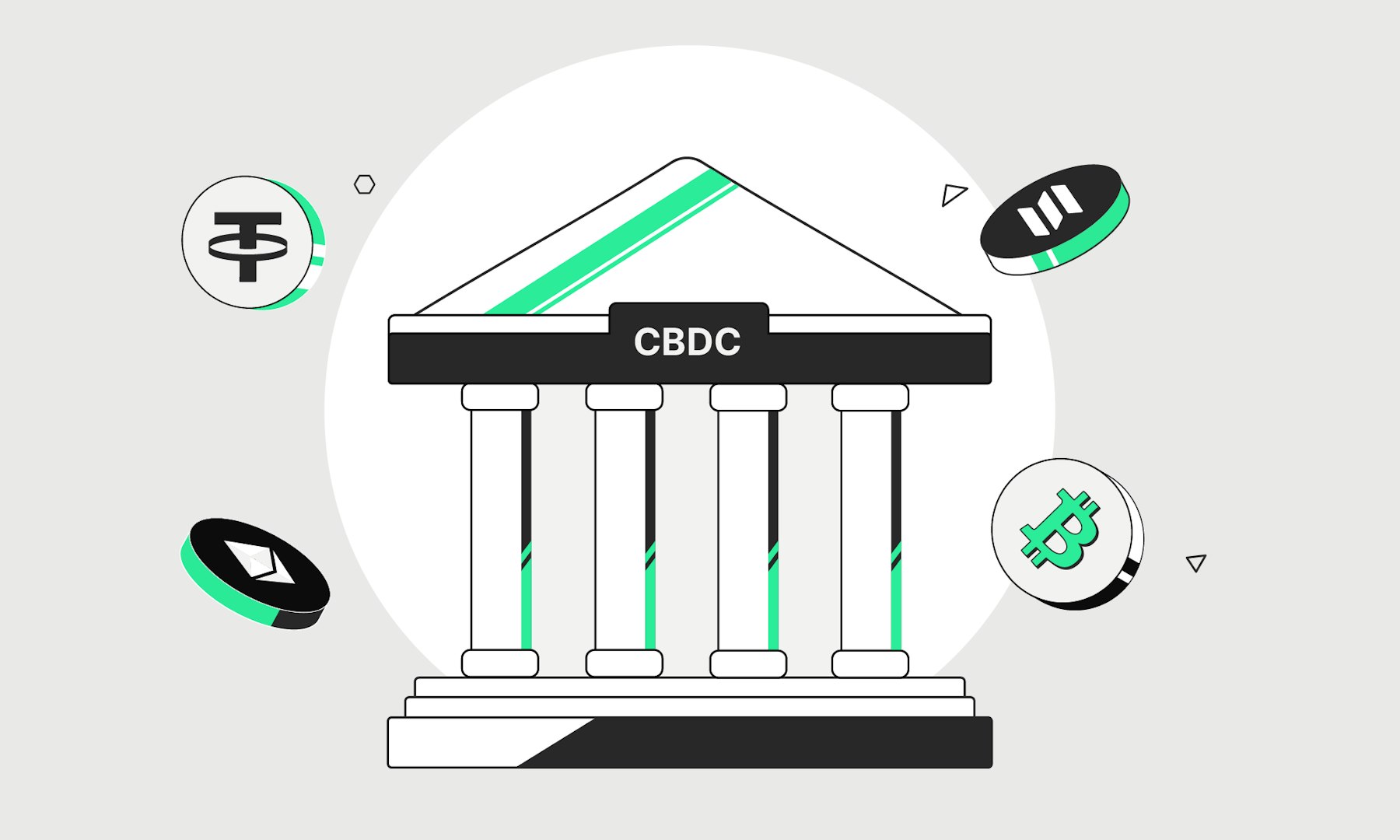CBDC – What is it?
The abbreviation CBDC stands for Central Bank Digital Currency. Literally translated, this means digital central bank currency, with the term digital central bank money also being commonly used in German for CBDCs. By definition, CBDC is a digital form of currency issued by the central bank. Digital central bank money is part of the traditional financial system of fiat currencies and is backed by the government of the respective country. The concept of the digital currency CBDC is inspired by cryptocurrencies such as Bitcoin or Ethereum but differs in that CBDCs are fiat currencies issued by central banks in digital form. If the European Central Bank (ECB) were to introduce such a digital currency, it would be the digital euro.
How does Central Bank Digital Currency (CBDC) work?
Digital central bank currencies can be implemented in different ways. CBDCs are based on blockchain technology, distributed ledger technology (DLT), or a customised solution designed to meet the specific needs of the central bank. The technologies used for digital central bank money are known for their transparency and security, making CBDCs well-suited for fast and secure transactions in everyday payments. Unlike cryptocurrencies, CBDCs are not decentralised but are directly linked to the currency of the respective country. This makes digital central bank money more stable and generally less prone to significant fluctuations in value.
CBDC is created in the form of digital tokens or account entries. In a token system, the CBDCs are issued as digital tokens based on blockchain or DLT technology. Alternatively, central banks maintain digital accounts for users through which transactions are processed. In both cases, the central bank can issue the digital currency directly into circulation without requiring other commercial banks or financial institutions as intermediaries.
How can digital central bank money be used?
CBDCs represent the digital equivalent of a national currency and serve as a bridge between a traditional monetary system and the digital world. Primarily, they are intended for use in everyday payments. You can use the digital central bank currency like cash to purchase products or services, carrying out secure transactions in real time. Furthermore, the currency can promote financial inclusion by making it easier for people without a bank account to access the financial system. CBDC also supports financial institutions. Using digital central bank money, financial service providers can offer their services more effectively, manage liquidity, and process transactions.
Types of Central Bank Digital Currency (CBDC)
There are two types of digital central bank money: wholesale CBDC and retail CBDC. Wholesale CBDCs are designed for industrial purposes and are intended for banks and financial institutions. Therefore, the wholesale currency is not issued to the public but is typically reserved for commercial banks and financial institutions. This form of CBDC is used for securities settlement and interbank trading and is intended to improve the efficiency of the financial system.
Retail CBDCs are available to the general public and are aimed at individuals and businesses. Retail CBDCs allow you to hold digital central bank money and carry out transactions without relying on a traditional bank. You can access the digital currency through a wallet or similar platform. The digital money enables you to make payments and transfers, receive funds, and carry out other financial transactions.
The role of the central bank in CBDC
The primary task of the central bank in the context of digital currency is its introduction, issuance, and management. All rules and regulations concerning CBDC are set by the central bank, including the issuance volume and any applicable security standards. The central bank is also responsible for ensuring financial stability even with digital money. It monitors and controls the money supply to manage inflation and mitigate other risks. Thanks to its long history of managing the financial system, the central bank also ensures public trust in the digital currency.
Is CBDC a cryptocurrency?
The concept of Central Bank Digital Currency (CBDC) is inspired by currencies in the crypto market but differs from them. Crypto market currencies are decentralised, whereas CBDCs are issued and regulated by a central bank. They also differ in terms of anonymity. Cryptocurrencies typically enable pseudonymous transactions where your identity is not fully disclosed. In contrast, digital central bank money transactions can be more closely monitored and traced to prevent illegal activities. However, it is worth noting that not all digital central bank currencies are the same. Some CBDCs may share greater similarities with cryptocurrencies due to the use of blockchain technology, while others may not.
Can I buy CBDC as an investment?
The primary function of CBDC is to serve as a digital form of government-issued money, not as an investment. The digital currency is intended to facilitate payment transactions, promote financial inclusion, and support the financial system. Unlike cryptocurrencies, which are created and traded, CBDCs are liabilities of central banks. Typically, there is no need for you to purchase CBDCs, as the digital money is issued by central banks and made available to users.
